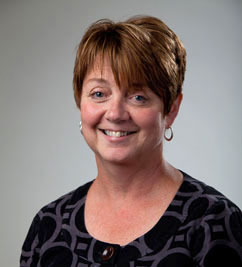Accountability Versus Local Control: Making Early Childcare Work
February 26, 2015

Beth Graue
A 4-year kindergarten (4K) program in Wisconsin catalyzed statewide opposition that district leaders did not anticipate.
Designed a decade ago, the 4K program caused private childcare providers to lose an important portion of their business: 4-year-olds. That loss made it harder for providers to cover the costs of more expensive infant and toddler care.
UW–Madison education professor Beth Graue and colleagues describe a more democratic, community-based approach that solved the problem could serve as a model for the rapidly growing public preK movement.
The early education and care sector is typically private, and varies highly from community to community. The K–12 system is largely public, and increasingly standardized at state and national levels. These two systems have quite different philosophies of practice, financing, teacher requirements, and regulations.
The early childhood community honors child-centered pedagogy, which builds curriculum developmentally. That does not fit well with many models of public school accountability, which focus on grade-level benchmarks and readiness and now are reaching into the early education arena, as with Wisconsin’s 4K program. Currently, 43 states spend more than $5.3 billion for public preK programs that serve more than 1.3 million 3- and 4-year-olds.
To determine how the public and private systems might work together more efficiently, Graue and colleagues Bethany Wilinski and Amato Nocera recently interviewed Wisconsin educators and state policymakers. “Wisconsin is a good example [of] the rapidly evolving policy landscape,” Graue says. It has a mature public preK program and serves students in 92% of the state’s school districts. Wisconsin’s design, which incorporates public schools and community childcare centers, shows the challenges of implementing a preK program in this political moment.
The “Policy Paradox”
“Traditional models of policy making suggest that the public policy process is linear,” Graue says. “An issue is defined, policy alternatives are created, evidence is considered, and the best policy option is determined and implemented.” Following this model, a policy challenge, like low-quality schools, is identified, and a policy solution, like the development of uniform educational standards, is implemented after evidence shows this to be the best solution.
But the “policy paradox,” as coined by professor Deborah Stone in 2001, describes how policymaking represents less a choice between alternative solutions than a battle over how political issues are defined and policy solutions represented.
“Political ideas are fluid and they reflect power relations,” Graue says. This takes local control and standardization into contested terrain. The boundaries of these priorities are not always clear and policies often reflect elements of both ideas.
In response to local needs and concerns, Wisconsin developed a 4K “community approach” (4K-CA) that exemplified the paradigm of local control.
One participant said, “Traditional 4K is a school-based, school-driven, thing. . . . The Community Approach brings all the players into the room—all the childcare people, all the kindergarten people, all the special education people, all the Montessori people, private sector, and public sector. And you say, ‘If we created one program for all the kids and all of us are players in this, what would it look like?’”
State policymakers and school administrators said they valued having the parameters of 4K determined at the local level. Policymakers also said they considered private childcare centers important community institutions, with knowledge and values that would be left out if 4K were implemented through schools.
Yet, 4K would need to find its place in a larger early childhood economy—one that included some children not being served by any program, some already in full-day childcare, others in part time nursery school, and others in Head Start or informal friend and family care.
Using terms such as “empowerment” and “representation,” many people interviewed praised 4K-CA for taking a democratic approach to administering 4K, particularly when compared to the alternatives. In its purest form, 4K-CA symbolized a preK program that reflected the values and needs of each community.
Rating the Providers
YoungStar is a Quality Rating and Improvement System that rates childcare providers on a scale of one to five stars, based on points the provider earns for education qualifications and training, learning environment and curriculum, professional and business practice, and child health and wellbeing practices. Providers with a rating of four or five stars receive additional childcare subsidies.
A growing national emphasis on standards and new assessment measures left some participants feeling that YoungStar was inadequate. The superintendent of the state Department of Public Instruction considered YoungStar a worthy model, but he believed that future initiatives needed to expand beyond providing just a quality rating of programs and to incorporate student assessment.
Interview subjects told Graue and colleagues about a cluster of initiatives that were changing 4K by drawing it into new assessment systems in hopes of improving quality. These included new ways to identify learning needs, track student growth and, potentially, evaluate programs. Although Wisconsin has no mandated curriculum for 4K, discussions indicated that might change soon. “[W]hat started as standards-based reform in 4K developed intoassessment policy,” Graue says. “[N]ow it has the potential to turn into a unified curriculum.” These developments suggest a significant shift in Wisconsin’s 4K that challenges a tradition of local control, as well as early childhood practices more generally. “Policymakers are blending policy ideas derived from both accountability reforms and a strong history of local control to determine the future of 4K policy,” Graue says.
Graue and colleagues continue to study the politics of accountability and encourage other educators to learn more about how policymakers bring together elements of contradictory discourse in the way they think about preK.


